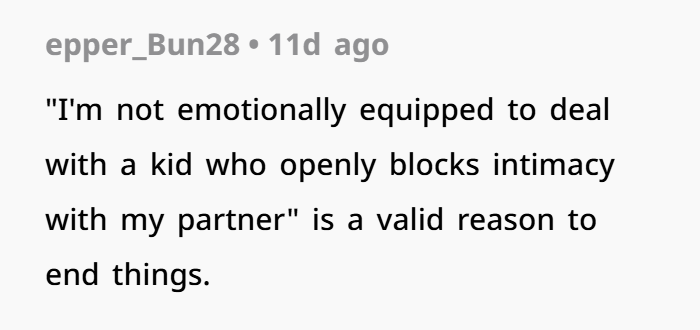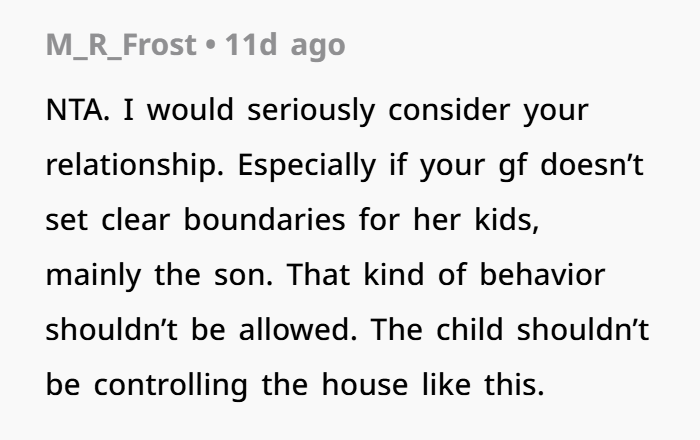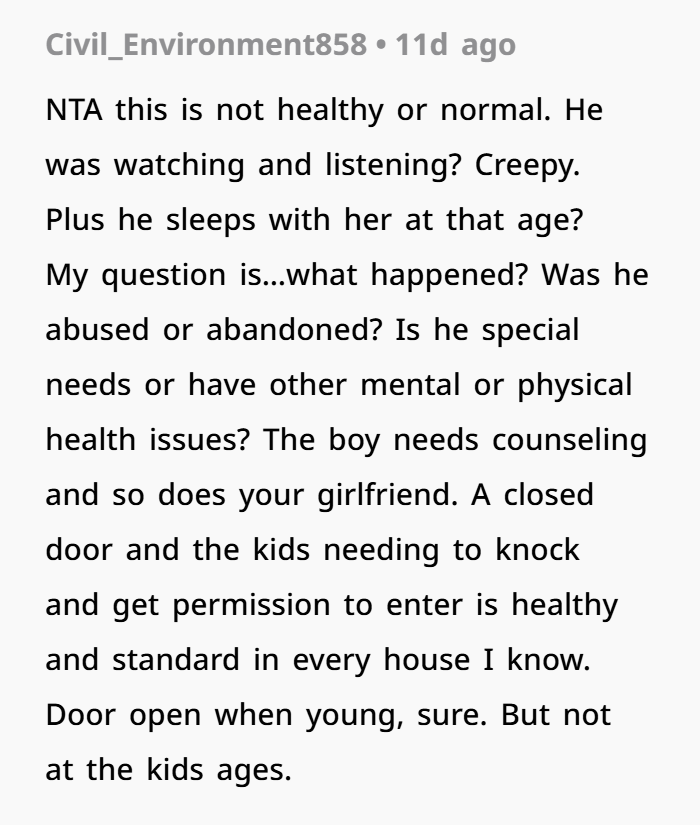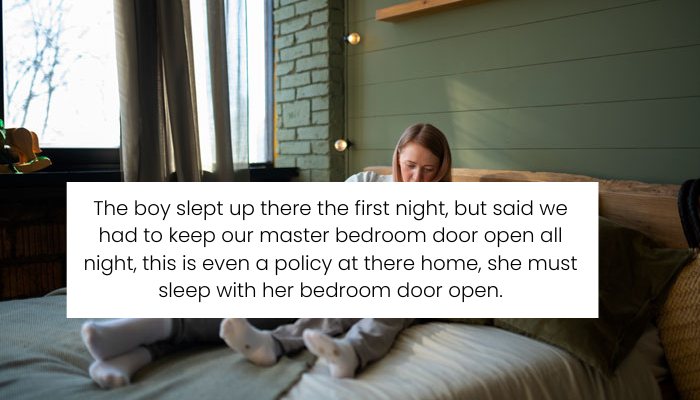Navigating Co-Sleeping and Boundaries: Challenges in Blended Families with Children Diagnosed with ADHD and ODD
A man in his late 30s shares his experiences and concerns about his girlfriend’s 11.5-year-old son, who frequently seeks to sleep in his mother’s bed and exhibits behaviors that intrude upon the couple’s privacy. During a family vacation, the boy insisted on keeping the master bedroom door open at night and reacted strongly upon witnessing the couple’s intimate moment, leading to significant tension. Despite a generally positive relationship with the boyfriend, the boy’s actions suggest underlying issues related to boundaries and attachment. The mother allows these behaviors, possibly influenced by her son’s diagnoses of Attention-Deficit/Hyperactivity Disorder (ADHD) and Oppositional Defiant Disorder (ODD), raising questions about appropriate parenting strategies and the dynamics of their relationship.
Navigating the balance between a romantic relationship and parenting can be challenging, especially when the lines between parent and child become too blurred
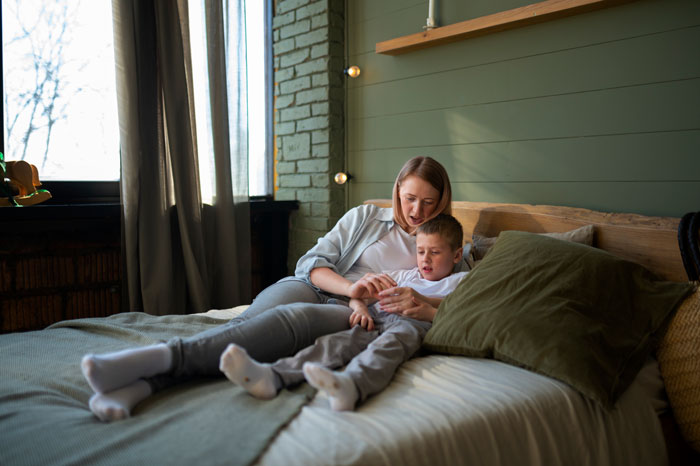
The author has a girlfriend who had two kids, including an eleven year-old son who insists on sleeping in her bed
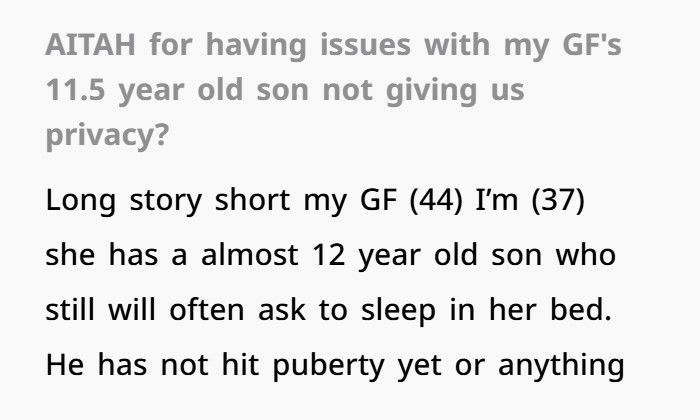
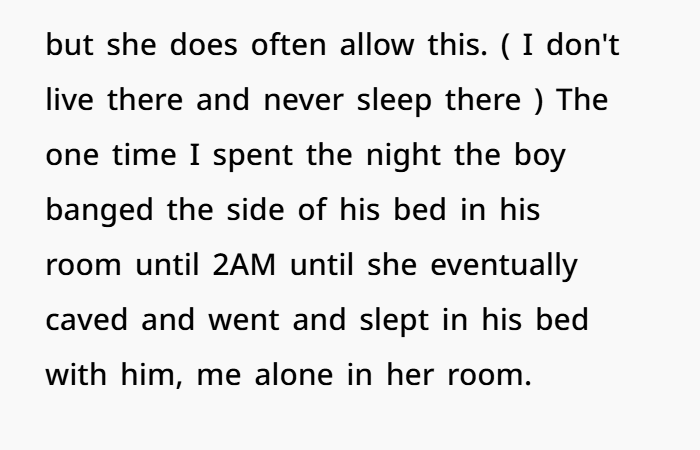
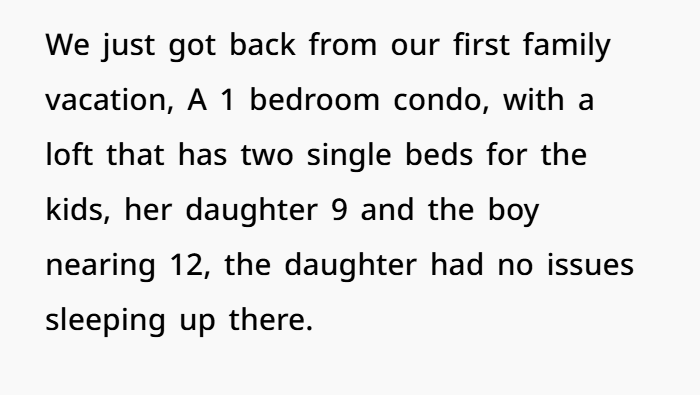
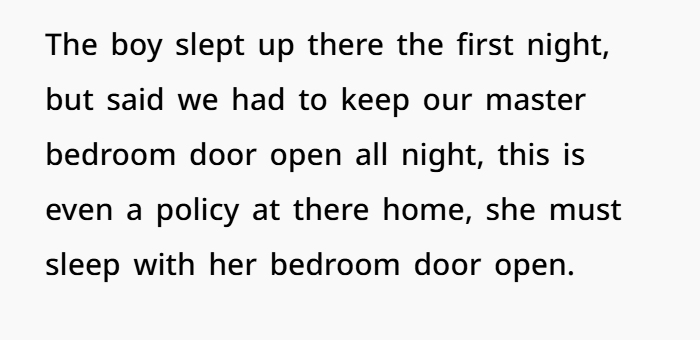
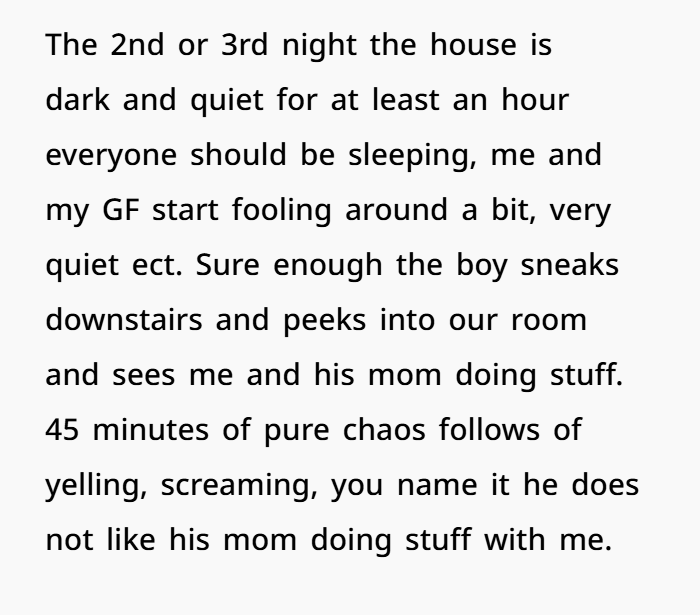

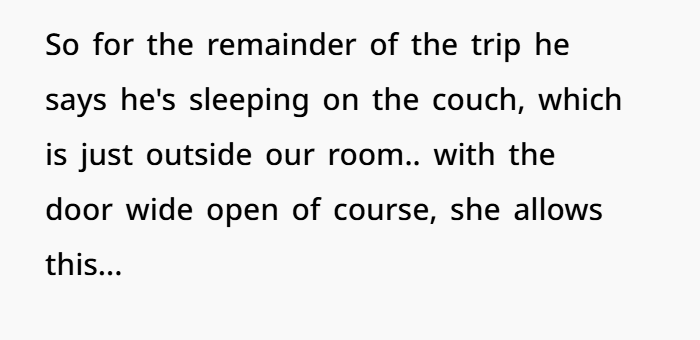


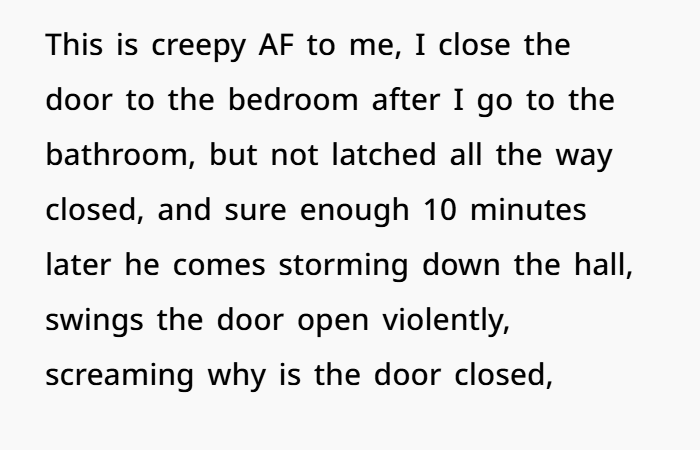
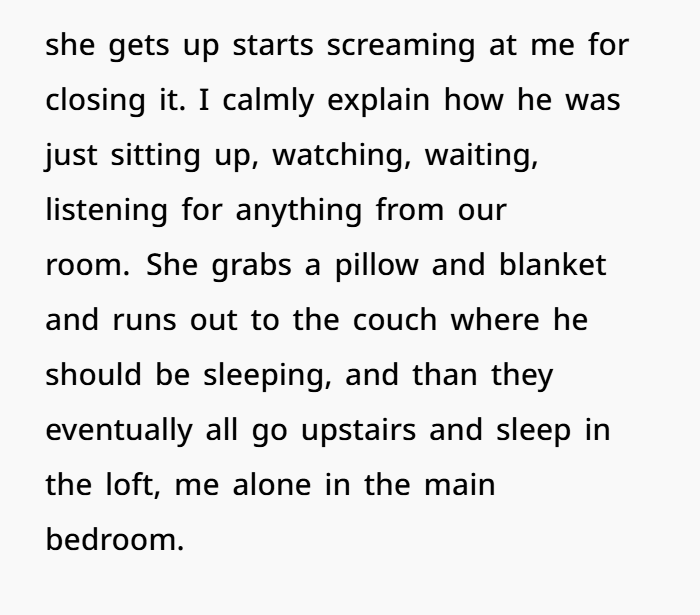
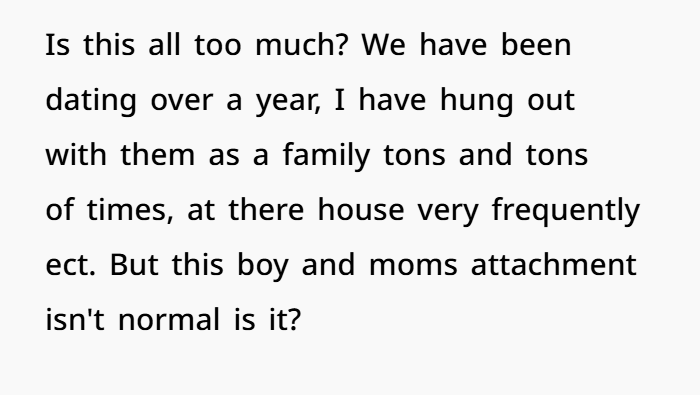
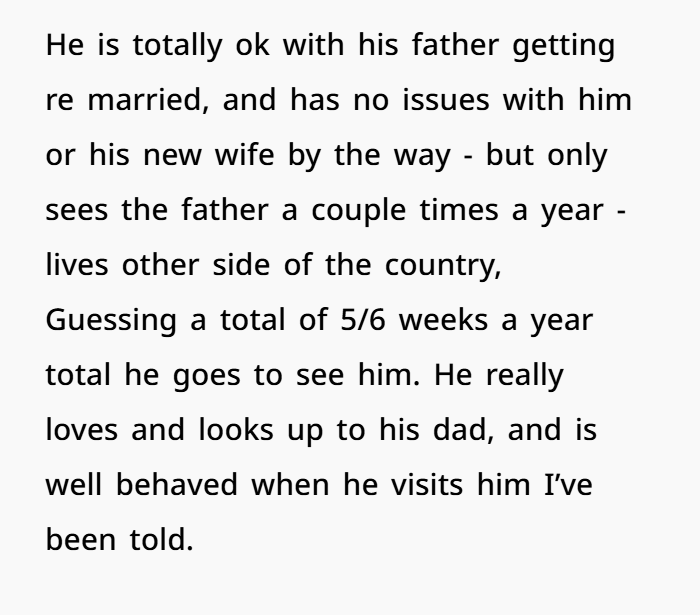
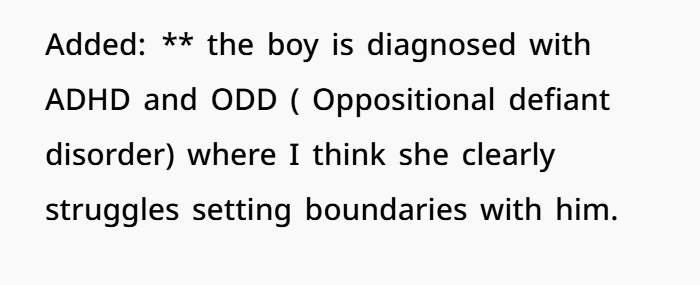
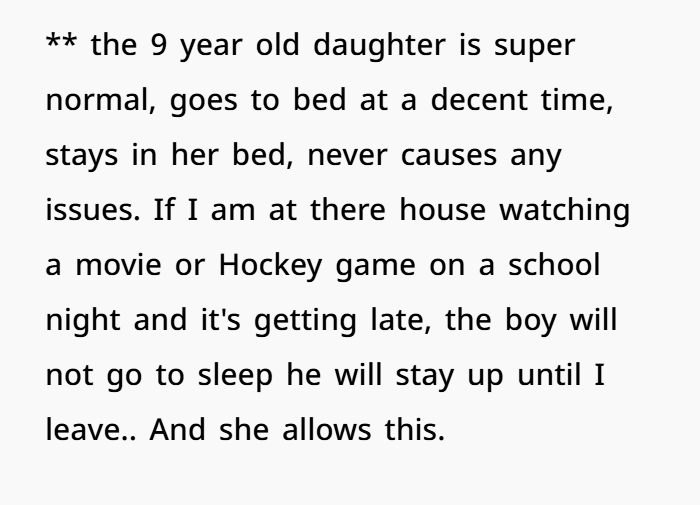
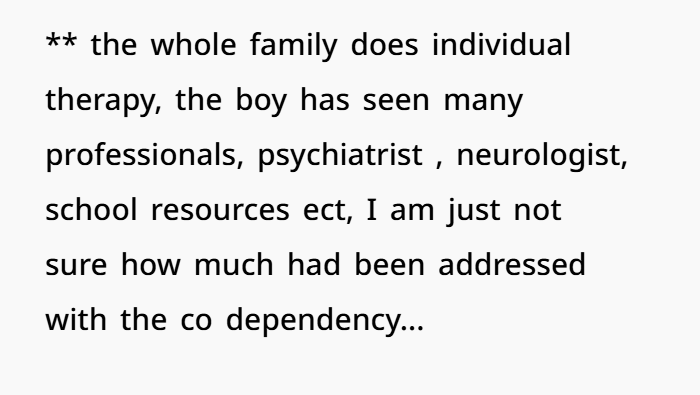
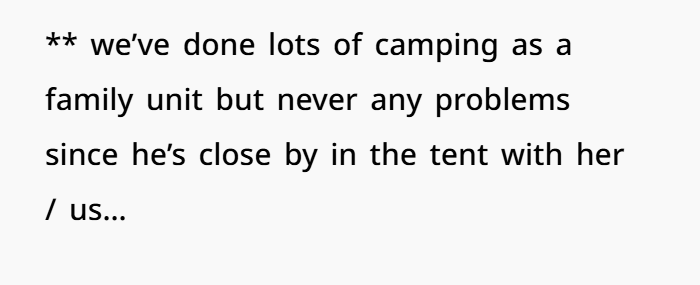

Navigating Co-Sleeping, ADHD, ODD, and Family Dynamics
In the intricate tapestry of blended families, establishing boundaries and fostering healthy relationships can be both rewarding and challenging. The scenario presented highlights the complexities that arise when co-sleeping habits, neurodevelopmental disorders, and differing parenting styles intersect.
Understanding Co-Sleeping and Its Implications

Co-sleeping, or the practice of sharing a sleeping space with a child, is a topic of considerable debate among parents and professionals. While some families find it fosters closeness and security, prolonged co-sleeping, especially with older children, can impede the development of independence and self-soothing abilities. The American Academy of Pediatrics advises against co-sleeping with infants due to safety concerns, and while less risky with older children, it may still lead to challenges in establishing personal boundaries and autonomy. Parents
In the described situation, the nearly 12-year-old son’s insistence on sleeping arrangements that involve his mother, and his resistance to her private time with her partner, suggest a level of dependency that may hinder his emotional growth. It’s essential to recognize that while seeking comfort is natural, fostering age-appropriate independence is crucial for a child’s development.
ADHD, ODD, and Sleep Challenges
The child’s diagnoses of Attention-Deficit/Hyperactivity Disorder (ADHD) and Oppositional Defiant Disorder (ODD) add layers of complexity to the family dynamics. Children with ADHD often experience sleep disturbances, including difficulty falling asleep and staying asleep. These sleep issues can exacerbate behavioral problems, leading to increased irritability and defiance. camhs.rdash.nhs.uk+1WebMD+1Parents
ODD is characterized by a pattern of uncooperative, defiant, and hostile behavior toward authority figures. Managing ODD requires consistent discipline strategies, clear expectations, and positive reinforcement. Inconsistent responses to behavior, such as acquiescing to demands to avoid conflict, can reinforce negative behaviors and make management more challenging. Wikipedia
Establishing Healthy Boundaries
For a blended family to thrive, establishing and maintaining healthy boundaries is paramount. This includes setting expectations around privacy, personal space, and appropriate behavior. It’s crucial for both partners to present a united front in enforcing these boundaries to provide a stable and predictable environment for the children.
In situations where a child exhibits resistance to these boundaries, especially in the context of ADHD and ODD, seeking guidance from mental health professionals can be beneficial. Therapeutic interventions, such as Parent-Child Interaction Therapy (PCIT), have shown effectiveness in improving parent-child relationships and managing disruptive behaviors. Wikipedia
Navigating the Path Forward

Addressing the challenges in this family dynamic requires open communication, empathy, and a commitment to the well-being of all members. It’s essential for the mother to recognize the importance of fostering her son’s independence while also nurturing her relationship with her partner. Collaboratively developing a plan that includes consistent routines, clear expectations, and professional support can pave the way for a more harmonious family environment.
Ultimately, while the path may be fraught with difficulties, with patience, understanding, and appropriate interventions, it’s possible to cultivate a family dynamic that respects individual needs and promotes healthy development for all involved.
Netizens insisted that the behavior of the son was weird, and that the author should rethink the relationship
